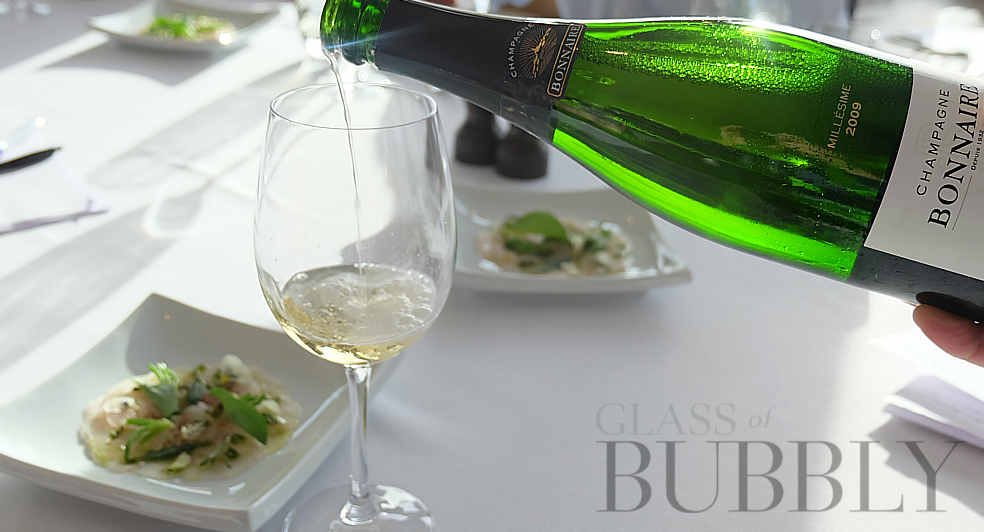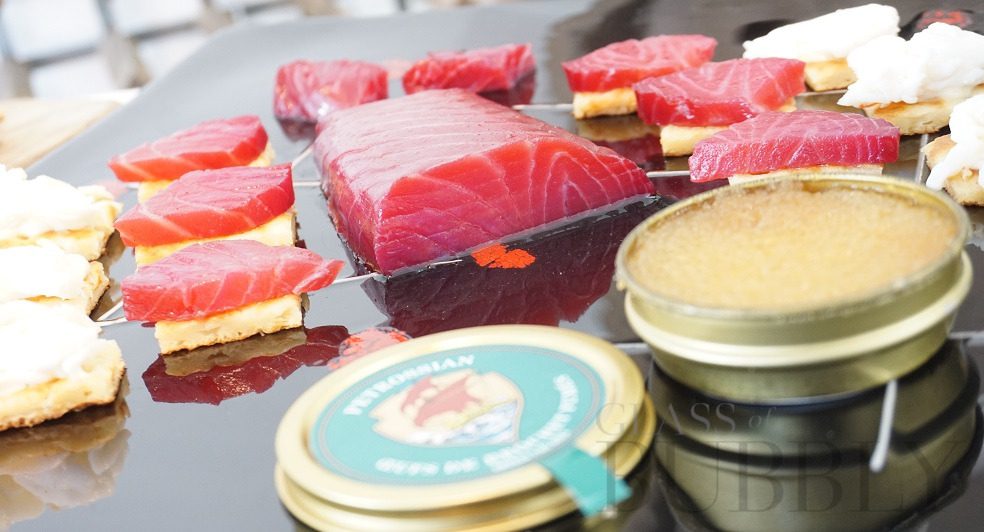The Art of Pairing Champagne with Fine Dining Cuisine
16th May 2024

When it comes to elevating a meal, few beverages compare to the elegance and sophistication of Champagne. This sparkling wine is not just a celebratory drink; it is also a versatile companion to various dishes. Learn about the nuances of pairing Champagne with fine dining cuisine, offering insights into making the perfect match for your next gourmet experience.
Understanding Champagne: The Basics
Champagne is a sparkling wine produced in the Champagne region of France. It is known for its effervescence, crisp acidity, and complex flavor profile, which can range from citrus and green apple to brioche and almond. The key styles of Champagne include Brut Nature, Extra Brut, Brut, Extra Dry, Sec, Demi-Sec, and Doux. Each style varies in sweetness, with Brut Nature being the driest and Doux the sweetest. Understanding these variations is crucial in making the right pairing decisions.
Why Champagne and Fine Dining are a Perfect Match
Champagne’s versatility stems from its high acidity and effervescence, which cleanse the palate and enhance food flavors. Its diverse flavor profiles allow it to complement a wide range of dishes, from delicate seafood to rich, creamy desserts. The right Champagne can elevate the dining experience, creating a harmonious balance between the beverage and the cuisine, so pairing Champagne with fine dining is a must! You might also be surprised to know that research done by the University of Reading confirmed that Champagne wine was observed to improve spatial working memory—so it also might be good for you in moderation.

Pairing Champagne with Appetizers
Appetizers set the tone for a meal, and pairing them with the right Champagne can enhance the overall dining experience. Here are some suggestions:
● Oysters—The briny, mineral notes of fresh oysters pair beautifully with the dry, crisp nature of Brut Nature Champagne. The acidity of the Champagne cuts through the richness of the oysters, creating a refreshing balance.
● Caviar—The luxurious texture and salty flavor of caviar are complemented by the high acidity and minerality of Extra Brut Champagne. This pairing highlights the subtle complexities of both the caviar and the Champagne.
● Smoked salmon—Its rich and slightly oily texture finds a perfect partner in Brut Champagne. The bubbles and acidity of the Brut cleanse the palate, allowing the delicate flavors of the salmon to shine.
● Foie gras—With its rich and buttery taste, it can be elevated by a Demi-Sec Champagne. The slight sweetness of the Champagne contrasts beautifully with the savory foie gras, creating a decadent and memorable start to any meal.
Champagne with Main Courses
The main course is the centerpiece of any fine dining experience, and Champagne can enhance its flavors. For lighter dishes such as poached lobster or seared scallops, a Blanc de Blancs Champagne, made exclusively from Chardonnay grapes, is an excellent choice. Its citrus and green apple notes complement the delicate sweetness of the seafood. For richer dishes like roast chicken or duck, a Blanc de Noirs, made from Pinot Noir and Pinot Meunier, offers a fuller body and red fruit flavors that stand up to the robust flavors of the meat. Likewise, vintage Champagne with more developed, toasty notes can pair exquisitely with complex dishes like Beef Wellington or venison. The Champagne’s depth of flavors complements the layers of the dish, creating a harmonious dining experience.
Vegetarian Options
When it comes to vegetarian dishes, such as creamy risotto or roasted vegetables, a Brut Champagne can provide the right balance. Its acidity cuts through the richness of the dish, while its subtle fruit and brioche notes enhance the earthy flavors of the vegetables. Another excellent vegetarian pairing is grilled asparagus with Hollandaise sauce. The crisp bubbles and bright acidity of the Champagne lift the richness of the sauce, highlighting the freshness of the asparagus. This versatility makes Champagne a wonderful choice for a wide range of main courses, ensuring a delightful meal from start to finish.
Pairing Champagne with Cheese
Cheese and Champagne might not be the most obvious pairing, but they can create a delightful combination. Soft, creamy cheeses like Brie or Camembert pair wonderfully with Brut or Extra Brut Champagne. The acidity and bubbles of the Champagne cut through the richness of the cheese, while the wine’s subtle flavors complement the creamy texture.
Hard cheeses, such as Parmesan or aged Gouda, work well with a Blanc de Noirs. The fuller body and deeper fruit notes of the Champagne stand up to the intense cheese flavors, creating a harmonious balance.
What’s more, blue cheeses such as Roquefort or Gorgonzola can be a perfect match for rosé Champagne. The slight sweetness and berry notes of the Rosé balance the sharp, salty tang of blue cheese, offering a surprisingly delightful contrast. This pairing highlights the versatility of Champagne and its ability to enhance a wide range of cheese flavors.
Champagne and Desserts
Dessert pairings with Champagne can be particularly enchanting. For lighter desserts such as fruit tarts or lemon sorbet, a Demi-Sec Champagne, with its slightly sweeter profile, is an ideal match. The wine’s sweetness enhances the fruit’s flavors, while its acidity prevents the pairing from becoming overly cloying.
For richer desserts like crème brûlée or chocolate mousse, Doux Champagne, the sweetest style, can provide a luxurious finish to the meal. The high sugar content of the Doux Champagne complements the richness of the dessert, while the bubbles add a refreshing contrast.
Also, pairing a Rosé Champagne with berry-based desserts, such as raspberry pavlova or strawberry shortcake, can elevate the dining experience. The fruitiness of the Rosé complements the berries, creating a harmonious flavor profile that is both refreshing and indulgent. This combination is perfect for celebrating special occasions with a touch of elegance.
Responsible Enjoyment
While Champagne can significantly enhance a fine dining experience, it is important to enjoy it responsibly. Excessive drinking can lead to health issues and negatively impact your dining experience. It is always wise to balance enjoyment with responsibility, savoring the flavors and moments without overindulging. Remember, the true essence of pairing Champagne with fine dining is to enhance the meal, not to overshadow it.
Of course, if you suspect that you or somebody close to you might have a drinking problem, don’t ignore the signs. Moderation is key, and being mindful of your consumption ensures you can enjoy your dining experience without worry. Remember, you can always choose non-alcoholic beverages and still have a great time.
The Art of Pairing Champagne with Fine Dining
Pairing Champagne with fine dining cuisine is an art that enhances the dining experience by bringing out the best in both the food and the wine. Whether it’s the crisp acidity of a Brut Nature with oysters, the full-bodied richness of a Blanc de Noirs with roast duck, or the sweet elegance of a Doux with a decadent dessert, the right Champagne can elevate any meal. By understanding the different styles of champagne and their unique flavor profiles, you can create harmonious pairings that delight the palate and celebrate the joy of fine dining.
![]()
Glass of Bubbly Content
Content shared by this account is either news shared free by third parties or advertising content from third parties and affiliations. Please be advised that links to third party websites are not endorsed by Glass of Bubbly Ltd - Please do your own research before committing to any third party business promoted on our website.
